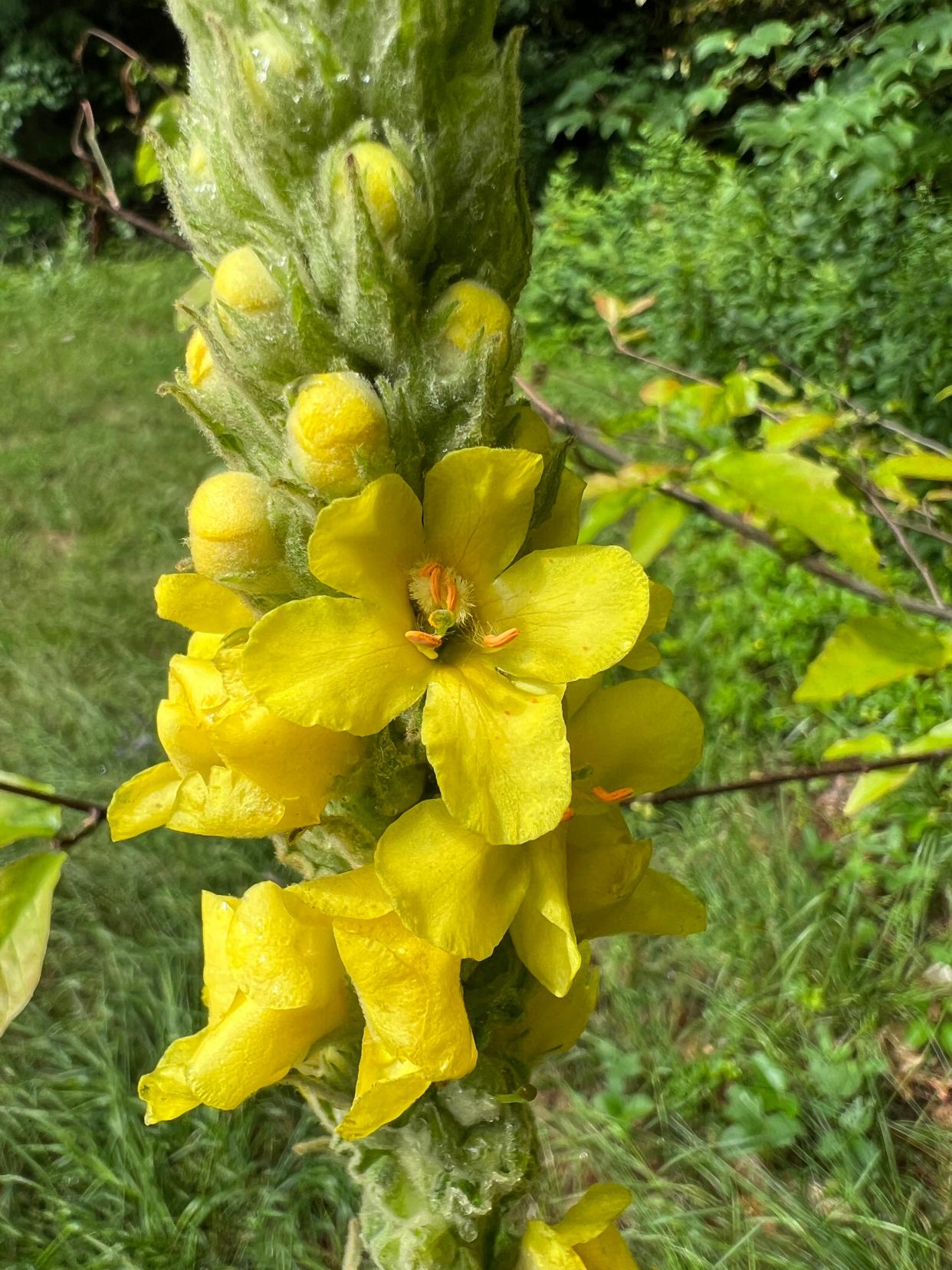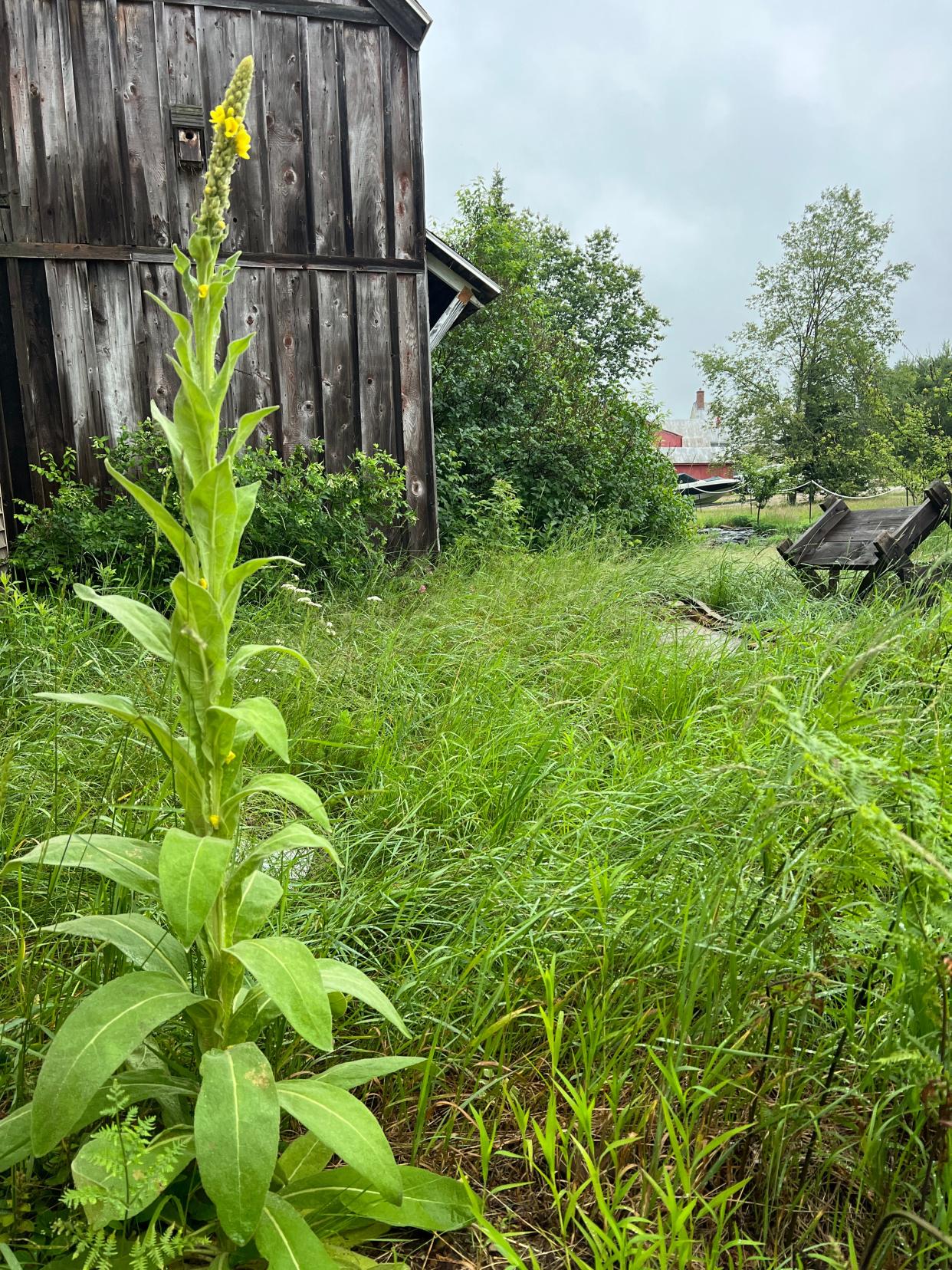Nature News: Is mullein a friend or foe to your garden?
Look along roadsides or any disturbed areas with some open ground, and you are likely to see common mullein, blooming huge spikes of cheery yellow flowers.
We have some growing in the bare patches around our field, and usually we mow them down. They are non-native and have an unsavory reputation — weeds that grow in waste places, a symbol of neglect.
While not considered invasive in New England, mullein can be an aggressively invasive species in parts of the Midwest and western North America, where it needs to be actively controlled.
But here, where mullein does not appear to present such a threat to our native wildlife, is there an argument in favor of letting it be?

Mullein offers a variety of benefits to local wildlife — the spikey flowers are attractive to pollinating insects and seed eating birds, and its huge fuzzy basal leaves provide shelter for small insects in the winter.
Should I stop mowing mullein down and welcome it into my garden?
A native of Europe and Asia, mullein was introduced to North America multiple times and in multiple places by European settlers. One of the first recorded introductions was to Virginia in the mid-1700s as a fish poison. Referred to as a “fish sting,” this now illegal fishing method involved grinding up the seeds, which contain poisons such as rotenone and coumarin, and tossing them into a pond or slow-moving stream. Then all you had to do was wait until the fish floated to the surface and scoop them up.
Mullein was also grown as a medicinal herb and used to treat a variety of conditions, from leprosy to lung conditions to fungal infections. It was intentionally planted in many cottage gardens. The plant has a high oil content and its dried leaves were used as lamp wicks and tinder. The dried stalks were used to make torches, and the flowers were used to make a yellow dye. One of my favorites is the use of the large, flannel-like basal leaves to cushion the insides of boots and shoes. The numerous little hairs on these leaves, which can irritate sensitive skin, are said to invigorate the feet. I haven’t tried this yet, so I can’t confirm this benefit.

By the early 1800s, mullein was so well established on the East Coast that it was considered a native species in early accounts of American flora. It is now present throughout the U.S.
Mullein is a biennial. One year it produces a big rosette of leaves at the base, and the next year, a tall flower stalk (5-10 feet!). Small bright yellow flowers are grouped densely on the leafy spike. The flowers don’t bloom all at once. Rather they bloom a few at a time throughout the summer, maturing on the stalk from the bottom to the top. These flowers are attractive to a wide variety of pollinating insects but are also self-pollinating (autogamous). They will pollinate themselves if not cross-pollinated by insects.
All that potential for pollination can be an issue if you are trying to keep mullein out of your garden. Katie Stannard (of Michigan’s Matthaei Botanical Gardens) writes, “The problem with mullein is this: it’s an incredibly prolific seed producer, whose seeds persist in the seed bank for decades: a parent plant produces 100,000-180,000 seeds. (One seed study noted 232,000 seeds from a single plant!) However, seeds germinate in water and open soil– and can lie dormant in the soil for decades– more than 100 years– before germinating. One study in Denmark involved successfully germinating common mullein seeds of an archaeological soil sample dated to 1300 A.D.”

This means that I can cut down as many mullein plants as I like, and there will likely be seeds already in the seed bank (the ground) waiting to spring up. Seeds that could be a hundred years old- even older! My house was built in the late 1700s. Could the mullein growing around the barn be from seeds planted by the original colonists?
If it isn’t clear by now, I’ve talked myself into letting some grow. I'm looking forward to watching the seasonal progression of this plant: from the towering yellow flowers of early summer to the seed-covered spike that will feed small birds (the finches love them) and the soft flannel-like leaves that will shelter small insects all winter.
Susan Pike, a researcher and an environmental sciences and biology teacher at Dover High School, welcomes your ideas for future column topics. Send your photos and observations to spike3116@gmail.com. Read more of her Nature News columns online at Seacoastonline.com and pikes-hikes.com, and follow her on Instagram @pikeshikes.
This article originally appeared on Portsmouth Herald: Nature News: Is mullein a friend or foe to your garden?


